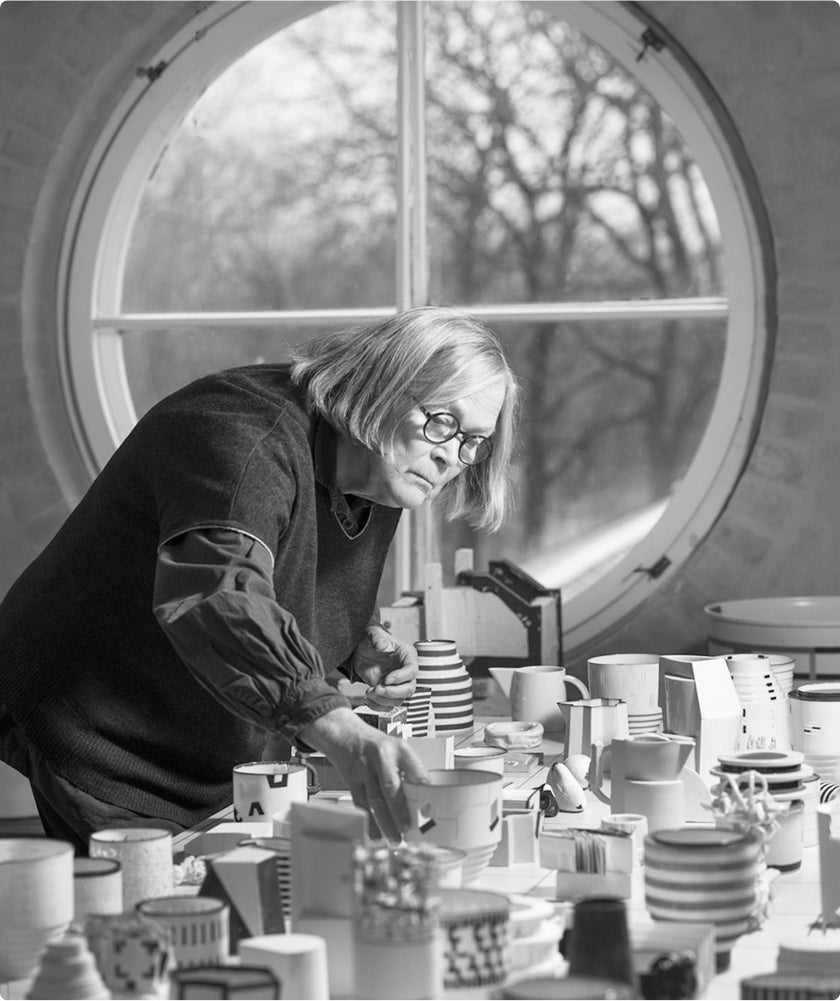In a world characterized by hectic pace and constant change, many of us seek an oasis of calm and harmony at home. An inspiring way to achieve this is through the fusion of two fascinating design styles: Wabi-Sabi and Japandi. Derived from the Japanese aesthetic, these two styles offer not only a visual exclusivity and tranquility, but also a deep connection to nature and a spirit of simplicity that appeals to the soul.
Wabi-Sabi: This is the beauty of the Imperfect
Wabi-Sabi, a concept rooted in traditional Japanese aesthetics, celebrates the beauty of the imperfect, the imperfect and the ephemeral. It is a philosophy that appreciates the natural passage of time and accepts the cycle of life.
In Wabi-Sabi design, you often find elements such as handmade objects, patinated surfaces, unpolished textures and a color palette that reflects the tones of nature. The warmth of the wood, the rawness of the cast iron and the calmness of the stone create an atmosphere of warmth and authenticity. This design takes us back to basics and reminds us of the beauty of the present moment.
Japandi: A Harmonious Fusion
On the other side of the spectrum we find Japandi, a modern fusion between Japanese and Scandinavian design. This style combines the minimalist approach from Scandinavia with the quiet elegance of Japan. Japandi is an aesthetic that strives for balance between the modern and the traditional, the functional and the decorative.
The color palette in Japandi design is often muted, with natural colors such as grey, white, beige and wood tones dominating. The furniture is simple and functional, and the focus is on creating a calm space without superfluous details. This creates a homely environment that invites relaxation and inner peace.
Inspiration for Danish Home: Wabi-Sabi and Japandi in Association
Denmark, with its rich design history and love of simplicity, is the ideal place to embrace the Wabi-Sabi and Japandi styles. Here are some practical and inspiring ways to integrate these design elements into your surroundings, whether you live in a busy city apartment or in the countryside.
-
Natural Materials and Crafts: Invest in furniture and decorations made from natural materials such as wood, bamboo and cast iron. Craftsmanship plays a central role in both styles, and Danish design traditions fit perfectly into this aesthetic.
-
A Color Palette of Tranquility: Choose a color palette inspired by nature. Muted shades of white, grey, beige and earth tones create a calm and balanced environment. You can supplement with elements of black for contrast and depth.
-
Minimalist Furnishing: Reduce the number of furniture and create spaces that invite movement and tranquility. Scandinavian furniture, with its clean lines and simple shapes, fits perfectly into the Japandi style.
-
Plants and Nature: Introduce green plants and elements from nature into your home. This not only adds life and freshness, but also connects indoor spaces with the outdoor environment.
-
Lighting as Atmosphere: Use soft and diffused light to create a calming atmosphere. Light sources such as paper lamps, bright diffused lampshades, a simple light chain and candles add warmth and coziness to your home.
-
Art with Meaning: Choose art and decorations with a personal meaning. These can be handmade objects, heirlooms or works of art that tell a story and add character to your space. Your space should hold your soul not easily purchased decorative items
-
Space for Reflection: Create small corners in your home that invite calm and reflection. This can be a comfortable armchair by the window or a small floor space with a simple candle holder
Implementation is Simple and Rewarding
The best thing about embracing Wabi-Sabi and Japandi in your Danish home is that it is a simple and rewarding process. It's about choosing quality over quantity, embracing the imperfect and creating a space that speaks to the soul. You don't have to renovate your entire home; small changes can make a significant difference.
Start by removing the unnecessary and creating more space for air and light. Buy some carefully selected furniture and decorations that reflect the Wabi-Sabi and Japandi principles. Explore local markets and craft shops to find unique pieces that tell your personal story.
A soft woolen blanket over a simple sofa, a handmade ceramic vase on the dining table or a personally chosen piece of art on the wall - small details can make a big difference. And when you see your home transformed into a place of peace and harmony, you will discover that you have not only created a beautiful space, but also a sanctuary from the hectic everyday life.




